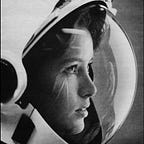Capturing Our First Ever Image of a Black Hole
This year, we’ll look directly into the abyss
Every picture anyone has ever seen of a black hole has been a depiction, an artist rendering of what we think these giants will look like. Until now, the closest we’ve come to directly sighting a black hole is by observing the effects they have on objects around them — causing stars to orbit at the center of our galaxy, spewing out powerful jets, and devouring interstellar matter during accretion. Material crossing the infamous event horizon leaves a certain glow. We can’t see this with our eyes alone but the friction causes the material to heat up by millions of degrees, making it possible to detect through x-rays and leaving a cloud of particles bigger than entire galaxies. Black holes also have a foundation in physics where they’re predicted to exist by Einstein’s theory of general relativity. However, Einstein himself doubted whether or not they could be real.
The black hole at the center of our Milky Way isn’t nearly so active. But while it might be quiet, it’s also huge, boasting a mass 4 million times greater than our sun and a diameter 17 times larger from where it sits 27,000 light years away. It’s classified as a supermassive black hole, the largest of the three types. How these black holes form is still debated but suggestions include thousands of…
